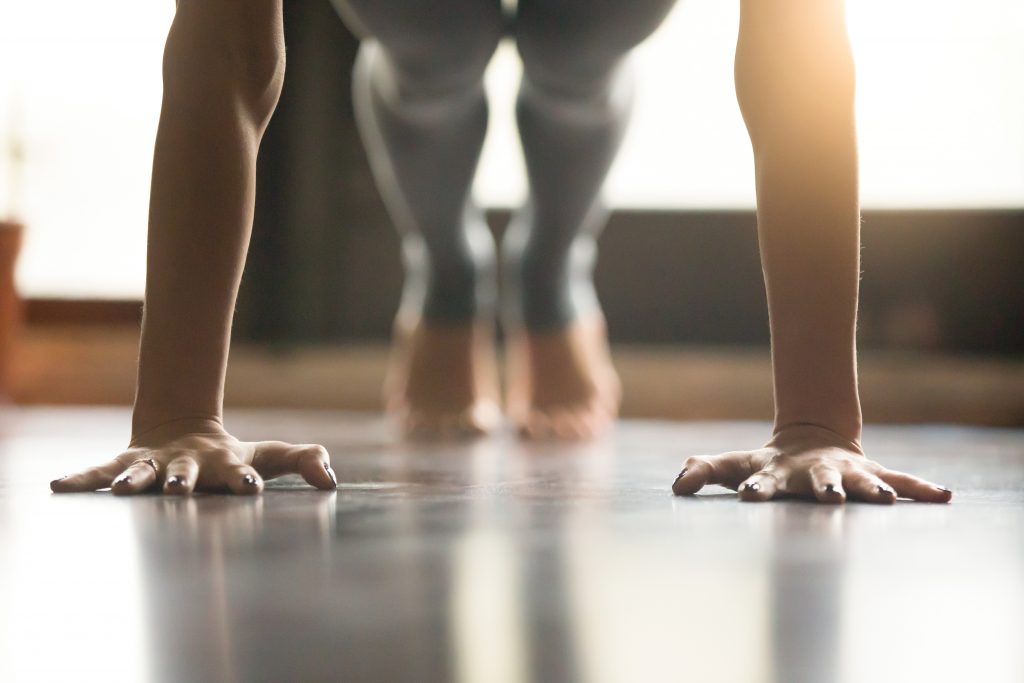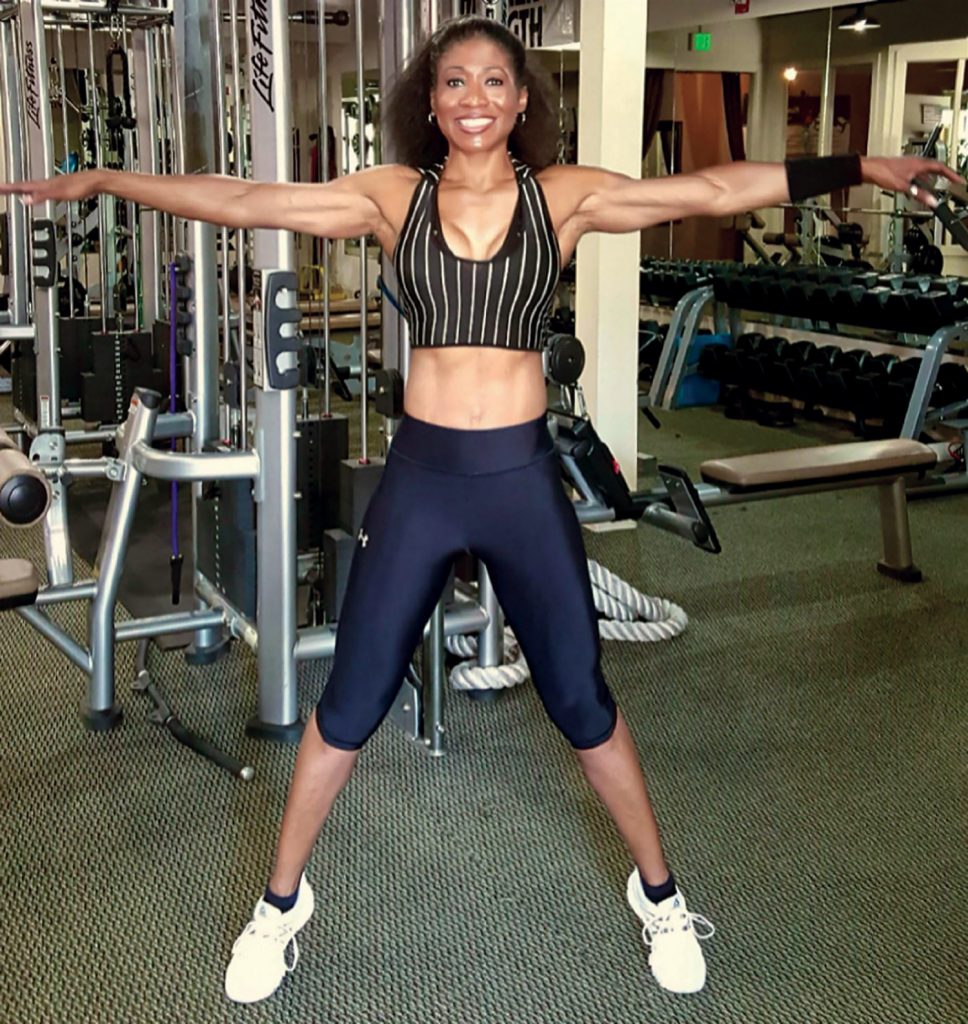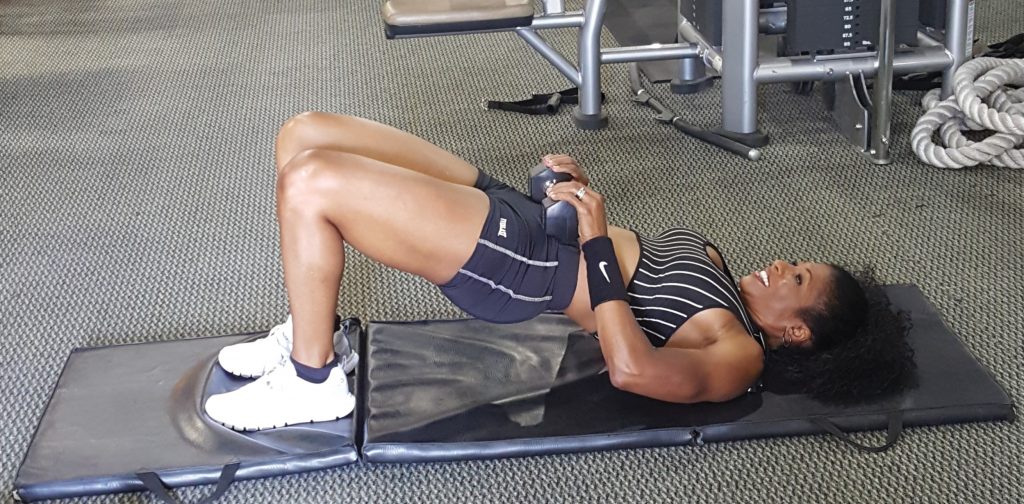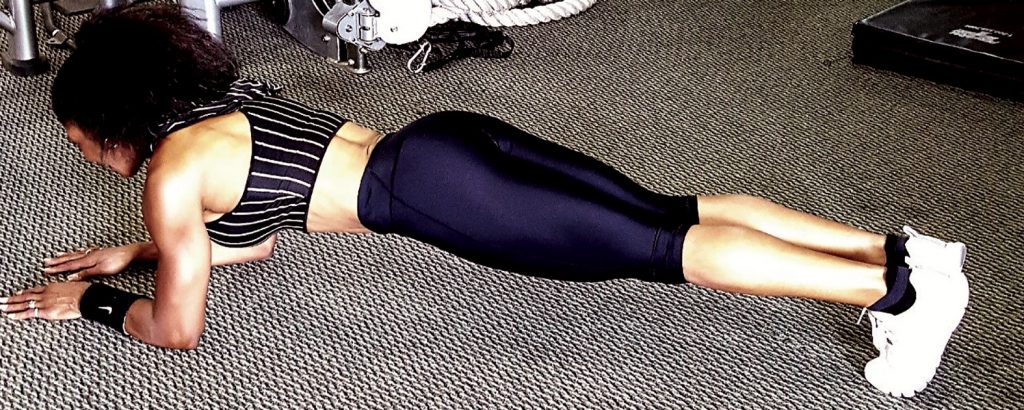By Dahlia Jean Weinstein & Laura Thornton

Renee Paul was 24 years old when “it” happened; the thing most women fear. After watching a bunch of young girls at a fitness demo for a local gym, she passed a mirror in her home, glanced back and noticed cellulite on her thighs for the first time. Paul knew cellulite is genetic and was pleased overall with the way she looked, but she made up her mind right then and there to join that gym and get in shape.
Paul’s favorite workout at the gym was an aerobics class called Flashdance, created by choreographer Jeffrey Hornaday, who—lucky him—also worked on the classic ’80s film of the same name. When the gym’s instructor made plans to depart, Paul got a surprise invitation: Would she teach the class? When she said yes, Paul was handed a VHS tape with the Flashdance choreography, and her little cellulite incident began a lifelong fitness career.
Today, Paul offers one-on-one personal training sessions, group training, nutrition coaching and, a portion of her business that has become very active with recent events, online training. She specializes in bodybuilding competition training, and at the age of 59, is still a competitive bodybuilder.
The more than 30 years in-between the Flashdance class and now went something like this: To make sure she was teaching the exercises in that first aerobics class properly, she began to research anatomy and came across a book written by former professional bodybuilder Gladys Portugues. Inspired by Portugues’ fitness path, Paul expanded her studies to food, nutrition and weight training, and became a certified health and fitness instructor.
Paul continued her fitness education after she moved to Germany, where her former husband was stationed with the U.S. military. She received international certification from ACE (the American Council on Exercise) and taught workouts for the Army MWR (Morale, Welfare and Recreation) program. Then, back in the U.S., she took her rhythmic cardio and personal training know-how to gyms such as Bally Total Fitness and 24 Hour Fitness until 2011, when she branched out on her own and started Greenwood Village’s Conceptual Fitness by Renee. She continues to teach SilverSneakers at 24 Hour Fitness, which is a health and fitness program for adults 65 and older. “I’ve always agreed with the notion what the mind can conceive, the body will achieve,” Paul says.
Suffice it to say Paul knows more than a thing or two about how to stay active regardless of circumstances. Consider these exercises a lesson on getting in a good workout no matter where you are, or what kind of equipment you have to work with. The tutorial motto: There is no need to struggle through fancy drills. Develop accurate form with basic exercises and your workout routine won’t know what hit it.
“This body-weight circuit workout is easy to do and doesn’t require any equipment. Everyone has been buying up home workout gear and forgetting the basics. These moves, without any gear, create a full-body workout.”

CARDIO: JUMPING JACKS (OR MOUNTAIN CLIMBERS)
LEVEL 1: Take it slow and steady.
LEVEL 2: Go “full force.”
FORM UP: “There is actually a lot of technique involved in jumping jacks. Jump out almost like you’re going to do a little squat, with your knees slightly bent. The toes, knees and hips all need to follow the same line and arms need to be straight out and up, not in any of those weird slightly bent shapes.”

LOWER BODY: LUNGES (AND/OR SQUATS)
LEVEL 1: Do one side at a time, with 10 stationary lunges on one leg and then the other.
LEVEL 2: Take on moving lunges. Lunge forward with one leg and, using the same leg you just lunged forward with, lunge backward, which should work your opposite thigh. Alternate sides.
LEVEL 3: For more cardio, try walking lunges.
FORM UP: “Step out within your walking gait. Your legs should be going straight down and straight up, and only the ball of your back foot should touch the ground. The heel of your back foot should be parallel to the ceiling when you are in the full lunge position.”

CORE AND UPPER BODY: PUSH-UPS
LEVEL 1: Start with the tried-and-true classic.
LEVEL 2: To work on balance, extend an arm at the end of each push-up.
LEVEL 3: Add a twist. Immediately after coming up from a classic push-up, rotate like you are going into a side plank. Both feet should still be touching the ground and your free arm should be lifted towards the ceiling or sky. Bring the arm back down and repeat.
FORM UP: “A push-up is really another version of a plank. If you need to, start on your knees. Come all the way down to the ground with your hands next to your chest, press off the floor through your palms to come straight back up and repeat.”

GLUTES: FLOOR BRIDGE
LEVEL 1: Bridge at a controlled pace. Hold each rep for two seconds at the top.
LEVEL 2: On your last bridge, do a 10-second hold or pulse.
LEVEL 3: For more abduction work, add a band around your legs and, pressing from your hips, push legs out at the top of each bridge. For more resistance, hold weights at your pelvis.
FORM UP: “Make sure you keep all of your muscles contracted to isolate the glute muscles. Our bodies are wonderful creatures: Stronger muscles like to help out weaker muscles. So, if you’re glute muscles aren’t strong enough on their own to lift your hips and create a straight line from your knees to your underarms, other muscles want to help your glutes get there.”

UPPER BODY: CHAIR DIPS
LEVEL 1: Chair dips focus on triceps, but still work other upper-body muscles. Dip off of a chair, a bench or even a couch—as long as it’s not a “soft couch,” Paul says.
FORM UP: “Make sure you are bending at your elbows. A lot of people are actually doing glute raises when they try to do this move because they lift through their backside. Bending your elbows, come parallel to the floor and then extend your arms up. Don’t lean too far forward or the shoulders will start doing a lot of the tricep work.”

CORE: PLANK
LEVEL 1: Hold a plank for five to 10 seconds at a time.
LEVEL 2: Work up to a 30- to 60-second hold.
FORM UP: “If you need to, start by doing planks on your knees. Then straighten one leg and, if you’re ok with that, straighten the other leg. Make sure your back doesn’t dip, your arms are pulled in and all of your muscles are contracting.”
REST AND REPEAT
● All six moves, performed in this order = one circuit.
● Complete up to three circuits in one workout, resting for two minutes between each.
● During a circuit, do up to 20 reps of each move or time each exercise for 30-second, 45-second or one-minute intervals.
● Rest no more than 10 seconds between moves.
● If you’re feeling sore, focus on stretching to increase flexibility: “Muscle soreness is going to be either from inactivity or from certain moves within a fitness routine that make you feel that way, and both instances revolve around flexibility.”
● One more thing: “Have fun with it! And it’s OK if you don’t finish the amount of reps you had in mind. Don’t get mad at yourself; just do what you can.”
FITNESS MYTHS
Running is the best form of exercise. “Running is a great form of exercise—for runners. There is nothing wrong with running, but not everyone can do it. And there is a right way and wrong way to go running. If you simply walk at a good pace, you can get fit and lose weight.”
If you’re not sweating, you’re not working hard enough. “If you’re not sweating, you’re dehydrated. Lack of sweat is not an indicator of a bad workout.”
Lifting weights will make you bulky. “You will only bulk up like a bodybuilder if you eat and train like a bodybuilder. Lifting weights and gaining muscle can actually shape your body and burn more calories than cardio.”
Spot reduction works. “You can’t work only one part of the body and gain muscle or lose weight in just that location. It will not work.”
No pain, no gain. “There is a difference between having sore muscles after a workout and collapsing on the gym floor, unable to get back up. Pain is never the sign of a good workout.”


